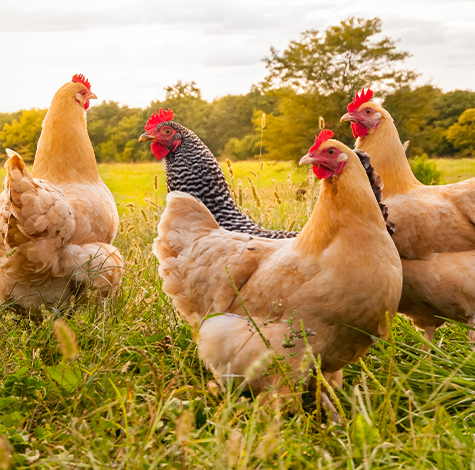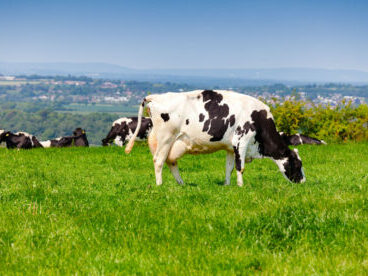With every dairy farmer looking to improve efficiency to increase margins and reduce production costs, we asked Philip Vernon, UFAC-UK Business Manager in the South East for his thoughts on how to drive feed efficiency.
Quality ingredients = efficient production
With every dairy farmer looking to improve efficiency to increase margins and reduce production costs, we asked Philip Vernon, UFAC-UK Business Manager in the South East for his thoughts on how to drive feed efficiency.
F4T: Surely the way to reduce cost of production is to use cheaper ingredients?
PV: The simple answer to this is no.
Cows need to be managed and fed to meet their genetic potential. If we understand how the cow utilises feed, we are better placed to improve management of every aspect of the diet. To maximise milk from forage and meet her requirements, all ingredients need to be assessed for their individual contribution. This includes protein, both DUP and ERDP, as well as energy sources including starch and sugars, NDF and oils. A correct balance will help maximise dry matter intake which is key.
Reducing ingredient quality can also reduce cow performance leading to an actual increased cost per litre. The diet must provide the specific nutrients to meet the cow’s genetic potential, while also maximising milk from forage. This requires careful ingredient selection based on what the ingredient provides, not what it costs.
F4T: So where should we start with diet formulation?
PV: Rumen function must be maximised before considering any other aspects of the diet. We have to supply the correct balance of rumen fermentable and bypass energy and protein, along with a balanced supply of essential fatty acids, including omega 3s. When formulating rations we must ensure the diet fully meets the cow’s requirements, and a key part of this is making sure that all limiting nutrients are met.
F4T: What does that mean?
PV: When rumen function is maximised, at some stage a specific nutrient in the diet will become limiting. Once a nutrient becomes limiting it affects the efficiency of the whole diet, reducing performance and increasing costs. The actual order in which nutrients become limiting is a factor of yield and the genetic merit of the cow (see table 1).
Table 1
| Annual Yield
(Litres/Cow) |
Nutrient Factor limiting milk production
and profitability |
||
| 1st | 2nd | 3rd | |
| 7000 | Energy | ||
| 7500 | Energy | By-pass energy | |
| 8000 | By-pass energy | Energy | By-pass protein |
| 9000 | By-pass energy | By-pass protein | Energy |
| 10000 | By-pass protein | By-pass energy | Energy |
| 11000+ | By-pass protein | By-pass energy | VFA production |
A failure to meet the cow’s requirements will result in the loss of peak yields and a longer time spent in negative energy balance. This will have a damaging effect on overall herd health, particularly fertility, thus profitability.
F4T: What does this mean in practice?
PV: To meet by-pass energy requirements we need to look at the types and quality of energy being fed. By-pass energy sources include rumen by-pass starch such as caustic treated wheat or rolled maize, but the most important for dairy cows is rumen inert essential fatty acids. These are vital for many processes in the cow and rumen by-pass fatty acids from marine sources have been shown to be particularly effective.
F4T: Aren’t fats expensive?
PV: We need to think value not price and consider what the energy source really provides. Fats are often the first energy source removed from the diet on the grounds of cost, yet they play a crucial role in fertility and production.
In the early lactation period of negative energy balance, while a cow can generate 20% of her butterfat from VFAs produced by rumen fermentation, the remaining 80% must come from the diet. For example, a cow producing 35 litres at 3.8% butterfat, needs 1064g/day of dietary fat. Assuming a 22kg/day dry matter intake, the diet will need to contain 4.84% oils and fats. A failure to deliver this will reduce butterfat percent and potentially lower milk prices.
F4T: What about types of fat?
PV: As each fatty acid performs specific roles, cows must be fed a balanced fatty acid profile. While C16:0 fats are required for butterfat production, C18:1 fats are necessary for foot pad maintenance and for the replacement of mobilised body reserves. Shortages can result in higher levels of lameness and slower recovery of lost body condition.
As cows cannot synthesise C18:2 (Omega 6) and C18:3 (Omega 3), these have to be provided in the diet. Omega 3’s in the form of EPA and DHA are required for fertility. As cows are inefficient at converting these essential fatty acids from C18:3, sufficient quantities must be fed.
C16:0 fatty acids go direct to the udder and provide no energy for maintenance which is why they can be linked to excess body weight loss. Although the cow may appear to have sufficient total energy,she has to find energy for crucial body functions from elsewhere, primarily from body reserves, starting with body fat and then muscle.
F4T: Fertility will be important this winter. Any tips for diet formulation to help here?
PV: It will be critical to limit bodyweight loss. Ration to glycogenic energy requirements and the limiting factors in table 1. As outlined in the previous answer, there is only so much fat an animal can strip from body reserves, after which time they will start to lose muscle. Fertility studies have shown a correlation between increased rates of muscle loss and reduced fertility.
Cows should lose no more than 0.5kg/day and return to positive energy balance by 45 days in milk. Where BCS loss exceeds this, the percentage of follicles which successfully implant and egg size will be compromised, resulting in reduced conception rates.
In addition to ensuring sufficient energy supply, DUP supply must be adequate for two main reasons. The first is that when cows mobilise muscle, the amino acids in DUP are required to rebuild the muscle. If DUP is insufficient, amino acids are diverted from milk protein production, leading to lower protein content. The second is that DUP is required for effective reproductive performance.
F4T: What would be your key message to farmers this winter?
PV: Maximise milk from forage by focussing on purchasing feeds that balance their forages, to meet all their cow’s requirements. This will provide a more cost-effective diet with better performing, healthier cows.


 Back to News
Back to News 



